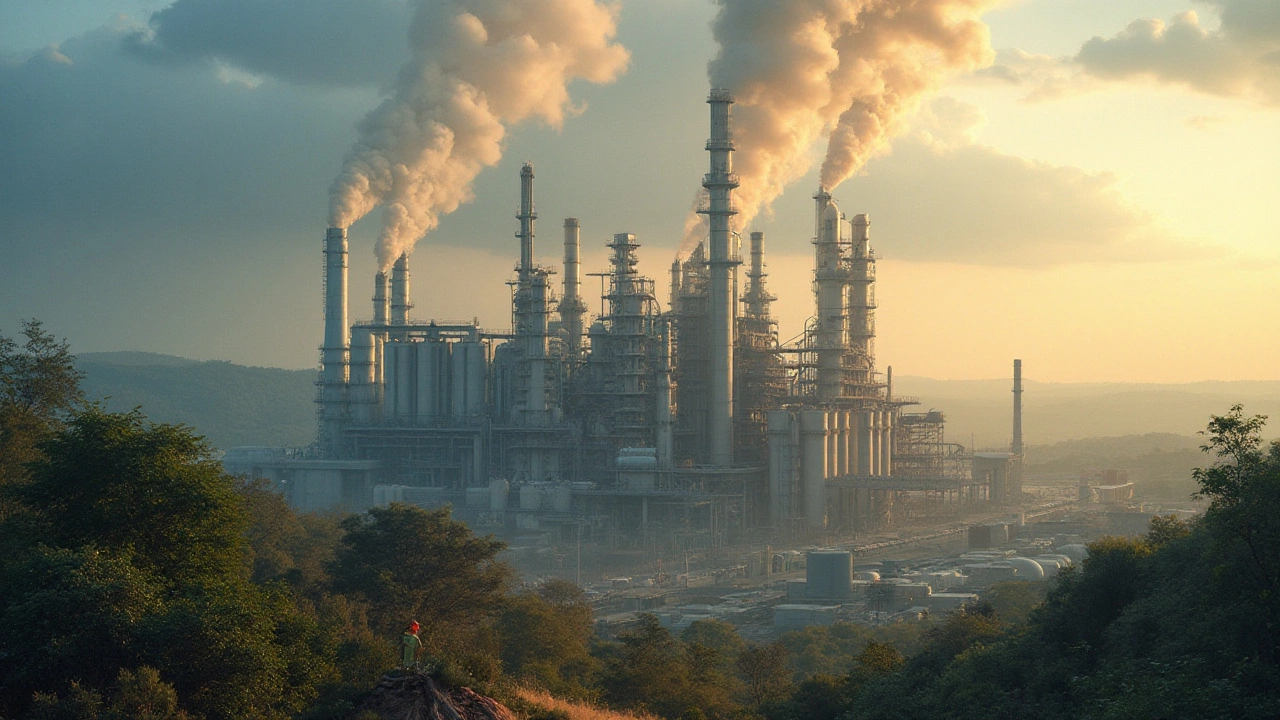Sulfuric Acid in Indian Manufacturing: What It Is, How It’s Made, and Why It Matters
When you hear the term “sulfuric acid,” you probably think of a nasty lab liquid. In reality, it’s a workhorse for India’s factories – from fertilizer plants to metal cleaners. If you’re curious about where this acid comes from, what it’s used for, and how to handle it safely, you’re in the right place.
How Sulfuric Acid Is Made in India
Most Indian producers follow the contact process. First, sulfur is burned to create sulfur dioxide (SO₂). The gas is then mixed with oxygen and passed over a vanadium pentoxide catalyst, turning it into sulfur trioxide (SO₃). Finally, SO₃ is dissolved in water, giving you the strong, watery acid we know.
Large plants are located near coastal ports – Chennai, Mumbai, and Visakhapatnam – because they need easy access to imported sulfur and cheap fuel. The process is energy‑intensive, so many companies recover heat from the reaction to cut costs. Modern plants also capture waste gases, keeping emissions under control.
Key Applications in Indian Factories
1. Fertilizer Production – The biggest chunk of sulfuric acid goes into making phosphoric acid, a core ingredient of phosphate fertilizers. India’s booming agriculture sector depends on this supply chain.
2. Metal Processing – Steel mills use the acid to remove rust and scale before hot‑rolling. It’s also essential for pickling stainless steel and zinc plating.
3. Petrochemical Refining – Refineries blend sulfuric acid with alkenes to create detergents that keep engines clean. The acid also helps in sulfur recovery, turning waste into usable sulfur.
4. Battery Manufacturing – Lead‑acid batteries for two‑wheelers and backup power rely on sulfuric acid as the electrolyte. With India’s growing power‑backup market, demand stays steady.
5. Textile Processing – Some dyeing processes need acid to fix colors onto fabrics. This keeps the textile sector, especially in Gujarat and Tamil Nadu, running smoothly.
All these uses mean that a shortage in sulfuric acid would ripple across multiple industries, raising product costs and slowing production.
Safety and Environmental Tips
Handling sulfuric acid demands respect. Always wear acid‑resistant gloves, goggles, and a face shield. If the acid splashes, rinse the area with plenty of water – never use a neutralizing chemical first.
Storage tanks must be made of carbon steel with a protective lining. Regular inspection prevents leaks, which could damage equipment or harm the environment.
When disposing of waste, neutralize the acid with a controlled amount of calcium carbonate before sending it to a certified treatment facility. This step stops the acid from reacting with sewage systems.
Many Indian plants now install scrubbers to capture sulfur dioxide before it leaves the site. The captured gas can be turned back into sulfur, closing the loop and cutting emissions.
Training workers on emergency response saves lives. Quick‑action kits, clear signage, and routine drills keep everyone prepared.
Future Outlook for Sulfuric Acid in India
India’s aim to become a top‑10 global manufacturing hub means sulfuric acid demand will keep rising. Government incentives for green chemistry are nudging producers to adopt cleaner technologies, such as using renewable energy for heating.
Investors are eyeing new capacity in the east coast, where ports and power availability give a competitive edge. If you’re a supplier or a buyer, keeping an eye on these developments can help you plan better.
Bottom line: sulfuric acid might be a simple chemical, but it powers a huge part of India’s industrial engine. Knowing how it’s made, where it’s used, and how to handle it safely gives you a solid edge in any manufacturing or supply‑chain role.

The Dominance of Sulfuric Acid: King of the Chemical World in India
In the bustling landscape of India's chemical industry, sulfuric acid has earned a regal status as the 'King of Chemicals.' This versatile compound is a cornerstone for numerous applications, ranging from fertilization to industrial cleaning. Understanding its pivotal role in manufacturing and infrastructure helps to appreciate the breadth of its influence. The article delves into its significance, production, and its impact on the economy.
